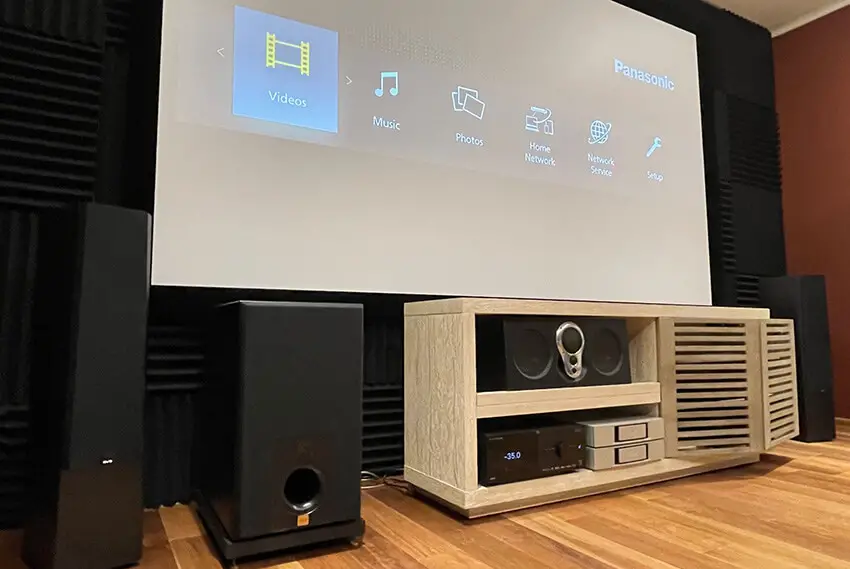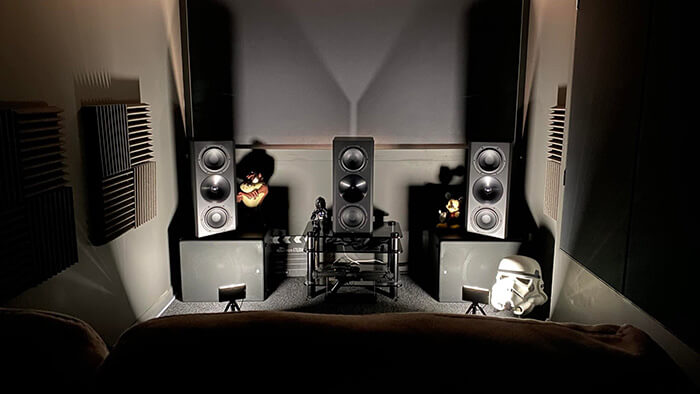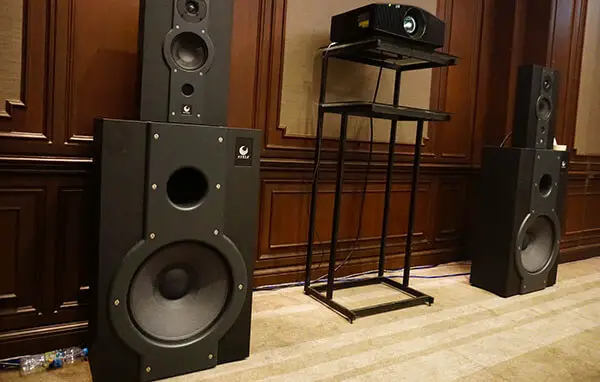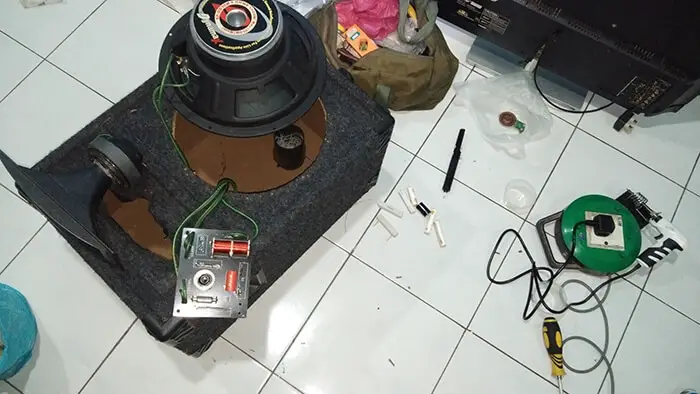Hosting a big party in your house? A house party is incomplete without playing your favorite songs on loud high volume and grooving to them. But if you plan to place the speakers here and there on the floor, not only will it look unappealing with wires dangling everywhere but also reduce floor space for people to dance around freely.
That’s why we recommend using ceiling speakers for filling your room with surround music and if you decide to connect your speakers to an amplifier, the experience will be even more thrilling. If you are on-board with this idea, keep reading to find out how to connect ceiling speakers to amplifiers in your room.
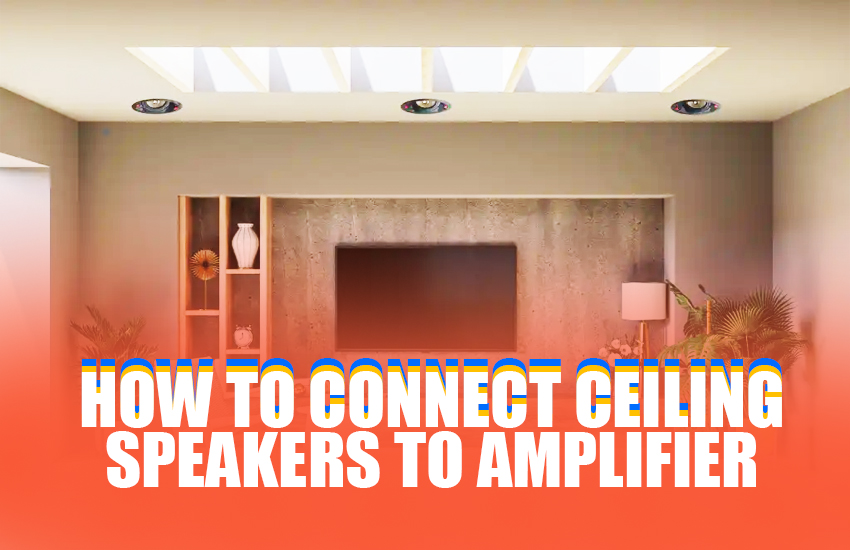
Preparations To Make Before Connecting Ceiling Speakers to Amplifiers
Since the task involves working with electrical wires and cables, we recommend wearing protective gears such as eye glasses, hand gloves and leg coverings.
You should also turn off all mains powers of your house as a preventive measure for any electrical hazards. Remember – safety first!
Furthermore, you will also need to assemble all the necessary tools required for establishing a connection between your ceiling speakers and an amplifier. Here’s what you’re gonna need:
- Philips Screwdriver
- An amplifier
- Speakers
- Wire Strippers
- Drywall Saw
- Level
- Flat Bit
- Stiff Fish Tape
Once you have all the tools ready, follow the step-by-step guidelines coming up next.
The Step by Step Guide to Connect Ceiling Speakers to Amplifiers
Step 1: Correctly Position The Amplifier.
The amplifier should be positioned in such a place that is stable and secure and also from where it can be easily monitored. If your modern amplifier came with a remote control or is Wifi-compatible or supports Bluetooth and Alexa, then you should place the amplifier in proximity to you for easy voice navigation.
Step 2: Measure The Distance.
After you have decided where to keep the amplifiers, now it’s time to measure the distance between your ceiling speakers and amplifier so that you can customize the cable size and length accordingly.
Step 3: Run The Wires
Just a heads up, you’ll need two runs of speaker wires for installing stereo. Now, once the distance has been measured and the length of the wires have been adjusted accordingly, you should run the UL2 wires from where your ceiling speakers are located to where you’ve positioned the amplifiers.
Step 4: Attach The Wire
Now connect the wire to your speaker and amplifier. You may have to drill holes through support beams to reach the wire to the ceiling speakers depending on where they’ve been positioned. Afterwards, once the wire is linked, keep behind an extra coil of wire where your ceiling speakers are situated.
Step 5: Prepare Ceiling Speakers For Connection
Start off with cutting the drywall behind the region where you wish to attach the amplifier. Next, detach the ceiling speakers from their brackets.
Find the color-coded terminals and then attach the red and black cables to the terminals – the black wire goes to the black terminal and the red wire at the red terminal. It will also be beneficial if you fastened the connections to prevent the wires from tangling or slipping out when operating on the speakers.
Step 6: Run The Wires To The Amplifier
Once the connection is firm and stable enough, return the speakers to their original location and carefully re-seal the brackets. Make sure that the cables are securely tightened and don’t feel loose. Once this is complete, seal the drywall and fill it in.
After connecting the red and black speaker wires to the ceiling speakers, send them through the wall into the amplifier terminals. Depending on the distance between the devices, you can run the cables along the wall or through the floor. Pass them safely under the carpet to keep them protected on the ground. Double-check one last time if the wire colors are correctly matched with their respective terminals.
Step 7: Test The Connection
Once all of the devices are properly connected, check to see if the amplifier does play any music and whether the sound output is coming through the ceiling speakers. If the speakers are not good-quality sounds or not producing sound at all, it is important to investigate the connection before closing the speakers.
Step 8: If the connection looks solid, make other adjustments to volume settings, EQ settings etc. on both the speakers and the amplifier. Play music and judge the quality to help you understand whether the volume has been correctly set.
If things are not working out and you’re struggling to figure out what went wrong and what needs fixing, you can seek professional help from an expert technician who’s good at these things.
Which Speaker Cable Should I Use With My Ceiling Speakers?
This is a common question we get and we’re here to clear the confusion. It’s extremely crucial to choose the correct speaker cable to connect to your amplifier to be able to enjoy the best sound quality since the various wires available in the market today all operate differently due to the different impedance levels. Choosing the wrong cable will be unfortunate.
Many people use 16-gauge 2-core speaker cables which are commonly available in shops. You can buy speaker cables that are anywhere between 12-16 gauge and have these three key features – good resistance, strong capacitance and impeccable inductance.
Wrapping Up
In this article we tried to walk you through the steps required to connect ceiling speakers to amplifiers. If you follow them correctly, you’ll be able to do the job yourself without requiring extra hands. Just be careful when handling the electrical components with bare hands.
Frequently Asked Questions:
Q.1: What amplifier to use for ceiling speakers?
Answer: Depends on the wattage of your ceiling speakers. If your speakers are rated at 60W+ then you can easily connect them with a 15 or 30W amplifier and face no issues.
Q.2: How do ceiling speakers connect to a receiver?
Answer: To connect ceiling speakers to a receiver, you’ll need to insert the speaker cables into the corresponding speaker input on your receiver. To be able to do this, you may need to cut, split, or strip the speaker wires to adjust their size and length in accordance to the distance between your ceiling speakers and receiver.
Q.3: Do ceiling speakers need an amp?
Answer: Yes, most ceiling speakers happen to be of the ‘passive’ kind which need to be powered by an external amplifier for optimum sound quality results. Using an amplifier will be a great advantage for you since it breathes life into the speakers when connected.
Q.4: What do I need to connect ceiling speakers?
Answer: You will require an amplifier for sure and you may also have to get an AV receiver.
